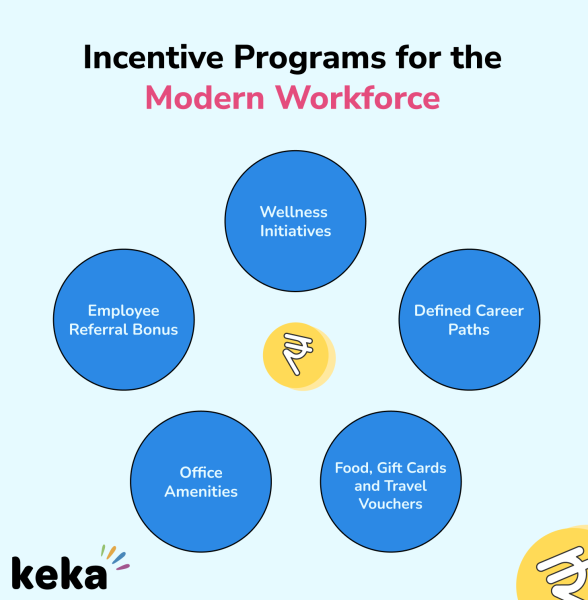Labor shortages in manufacturing are a big deal in many industries, including slipper manufacturing. If you’re a buyer in the retail sector, especially in supermarkets, you need to know how to navigate and mitigate the impact of labor shortages on slipper manufacturing. It affects your supply chain continuity, product quality, lead times, and overall costs. As a professional buyer for a supermarket, you need to know how labor challenges in the manufacturing process impact your buying decisions and what you can do about it.
1. Causes of Labor Shortages
Before we talk about solutions, let’s look at the root causes of labor shortages in the slipper industry. These can vary depending on geography, economic conditions, and the structure of the industry.
a) Aging Workforce

In many countries where slipper manufacturing is prevalent, such as China and Vietnam, the labor force is aging. Younger people don’t want to work in factories. They want service jobs or they want to move to the city to find better opportunities. As a result, factories have fewer workers who want to do manual labor. That’s a big deal for labor-intensive industries like slipper manufacturing.
b) Declining Interest in Manufacturing Jobs
As economies grow, people don’t want to work in manufacturing jobs. They want to work in technology, service, and retail. They don’t want to work on the production line. Also, in countries with better labor markets, people want to work for companies with better working conditions, benefits, and opportunities for career advancement. That makes it even harder to find people to work in your slipper factory.
c) Rising Wage Expectations

With fewer people coming into the labor force, wages are going up. People who are in the manufacturing business are demanding more money. That puts pressure on your costs. For your customers, that means they’re going to pay more for slippers, you’re going to have tighter margins, or you’re going to have to find cheaper slippers.
d) Supply Chain Disruptions and Geopolitical Factors
Transportation costs, raw material shortages, and political issues can also affect the availability of labor. For example, trade wars or tariffs can cause manufacturers to move their operations to new areas. When you move to a new area, it takes time to get a workforce in place.
2. Implications of Labor Shortages
For your customers, it’s important for them to understand the implications of a labor shortage on slipper production. Here are some of the direct and indirect consequences of a labor shortage on your supply chain:
a) Increased Lead Times
When you don’t have enough people to make slippers, you can’t make your production schedule. When you don’t make your production schedule, you don’t ship on time. When you don’t ship on time, you have longer lead times. When you have longer lead times, you have stockouts at your grocery store.
b) Reduced Production Capacity

When you don’t have enough people, you can’t make as many slippers. When you can’t make as many slippers, you can’t run as many hours. When you can’t run as many hours, you can’t run as many product lines. When you can’t run as many product lines, you can’t get as many slippers.
c) Higher Costs
As I mentioned earlier, when you don’t have enough people, you have to pay them more money. When you have to pay them more money, your costs go up. When your costs go up, you have to charge more money for your slippers. When you charge more money for your slippers, your margins go down.
d) Variations in Product Quality
When you don’t have enough people, you can’t do your quality control. When you can’t do your quality control, you don’t have the same quality of slippers. When you don’t have the same quality of slippers, you sell crappy slippers. When you sell crappy slippers, people bring them back to your grocery store. When people bring them back to your grocery store, they complain to your people.
e) Sustainability and Ethical Considerations
When you don’t have enough people, you hire temporary people. When you hire temporary people, they’re not as good as your regular people. When you hire temporary people, you don’t have as good of working conditions as you do for your regular people. When you don’t have as good of working conditions, you have ethical sourcing and sustainability issues. Ethical sourcing and sustainability are things that are important to consumers and regulators.

3. Strategies for Addressing Labor Shortages
As a buyer, you can help manage the impact of a labor shortage by being proactive. This means working closely with your manufacturers. It also means making long-term investments in technology, diversifying your suppliers, and thinking about ethical sourcing.
a) Diversifying Supplier Base
One of the best things you can do to mitigate your risk around labor is to diversify your supplier base. If you rely on one factory or one area of the world to get your slippers, you’re at risk if there’s a labor shortage in that area. If you have multiple factories in multiple areas of the world making your slippers, you’re less likely to have a disruption due to a localized labor shortage.

How to Implement Supplier Diversification:
- Identify multiple manufacturing regions: Look for factories in countries with more stable labor markets or growing manufacturing sectors.
- Evaluate production capacity: Make sure your alternative suppliers have the capacity to meet your needs, even if there’s a disruption.
- Establish strong relationships: Build relationships with your suppliers soyou get priority when things go bad.
b) Automation and Technology Investment
Encouraging manufacturers to adopt automation can help reduce reliance on human labor. Automated production lines can improve efficiency, reduce errors, and cut down on lead times. However, it’s important to work with suppliers who can invest in these technologies, as initial costs can be high.

Benefits of Automation:
- Increased consistency: When you automate, you get a more consistent product.
- Reduced dependency on labor: When you automate, you don’t need as many people to make your slippers.
- Higher productivity: When you automate, you can make your slippers faster.
How Buyers Can Encourage Automation:
- Collaborate with manufacturers:Talk to them about long-term contracts or co-investing in automation.
- Support manufacturers with grants or loans: If you can, help them get grants, loans, or find strategic partners to help them get the money they need to automate.
c) Strengthening Supplier Relationships

Building strong, collaborative relationships with your suppliers can help mitigate the impact of labor shortages. When your suppliers know they have reliable, long-term buyers, they’re more likely to put your orders at the top of the list when things get tough.
How to Strengthen Supplier Relationships:
- Communicate regularly: Regular updates and open communication about forecasts and demand fluctuations can help manufacturers plan their workforce better.
- Offer flexible payment terms: If a manufacturer is struggling because of increased labor costs, flexible payment terms or early payments can help them manage their cash flow and keep production running.
- Collaborate on workforce solutions: Work together to find solutions, such as training programs or employee retention strategies, to reduce turnover and labor shortages.
d) Focus on Ethical Sourcing

Labor shortages can lead to poor working conditions as factories push their existing workforce harder to meet demand. Ethical sourcing is becoming a bigger deal for consumers, and labor issues can impact your grocery store’s brand reputation.
Strategies for Ethical Sourcing:
- Conduct supplier audits: Regularly audit your suppliers to make sure they are following ethical labor practices and providing fair wages and working conditions.
- Work with certified suppliers: Look for manufacturers who have certifications for ethical labor practices, such as Fair Trade or SA8000.

- Promote transparency: Make sure there is transparency in your supply chain by working with suppliers who are open about their labor practices and challenges.
e) Long-Term Supplier Development Programs
Investing in long-term supplier development programs can help manufacturers improve their workforce management and productivity, which will reduce the impact of labor shortages over time.
Key Components of Supplier Development:
- Training programs: Work with manufacturers to develop training programs that improve their workers’ skills and productivity.
- Incentive programs: Encourage your suppliers to implement incentive programs that reward their workers for their performance, which will help them retain a skilled workforce.

- Support for recruitment: Help your suppliers with their recruitment efforts by developing partnerships with local vocational schools or recruitment agencies to find and train new workers.
f) Inventory Buffering and Demand Forecasting
Building a buffer inventory of slippers can help you mitigate the impact of potential production delays caused by labor shortages. By doing a better job of forecasting your demand and holding an inventory buffer, you can avoid stockouts during your peak periods.

Steps to Implement Inventory Buffering:
- Analyze sales data: Use historical sales data to forecast demand more accurately.
- Work with manufacturers on production schedules: Coordinate with suppliers to ensure they can meet your inventory needs during critical periods.
- Increase safety stock: During periods of known labor shortages, consider increasing your safety stock to avoid disruptions.
4. Conclusion
Labor shortages in slipper manufacturing present challenges that can significantly impact your supply chain, your product quality, and your costs. However, as a buyer, you can mitigate these risks by implementing a combination of short-term and long-term strategies. Diversifying your supplier base, encouraging automation, building strong supplier relationships, focusing on ethical sourcing, and investing in supplier development programs are all ways you can navigate labor challenges.
By taking a proactive approach to addressing labor shortages, you will create a more resilient and sustainable supply chain, which will help you maintain a consistent supply of slippers for your grocery store while managing your costs and maintaining your product quality. This strategic approach will not only reduce your risks, but it will also position you as a forward-thinking buyer who values innovation and responsible sourcing practices.


